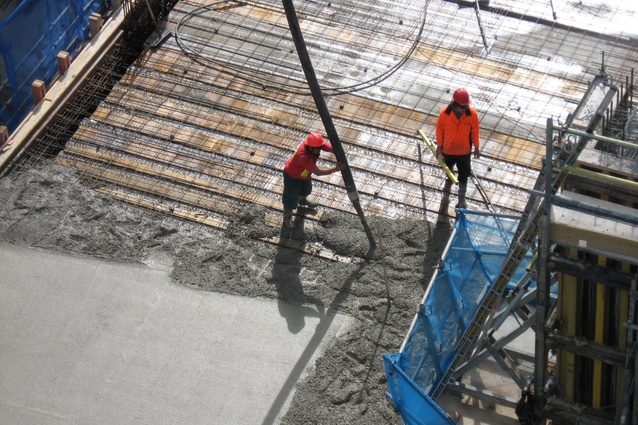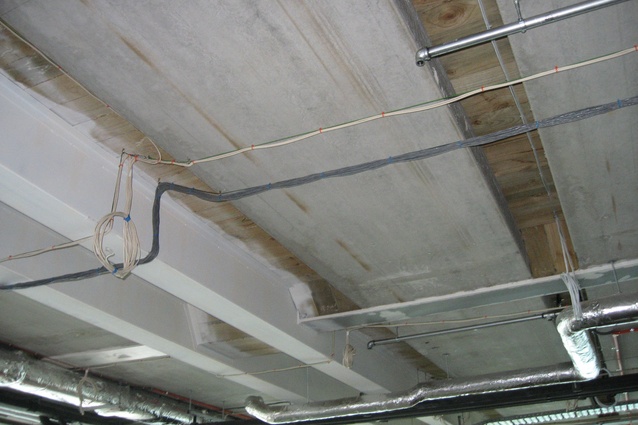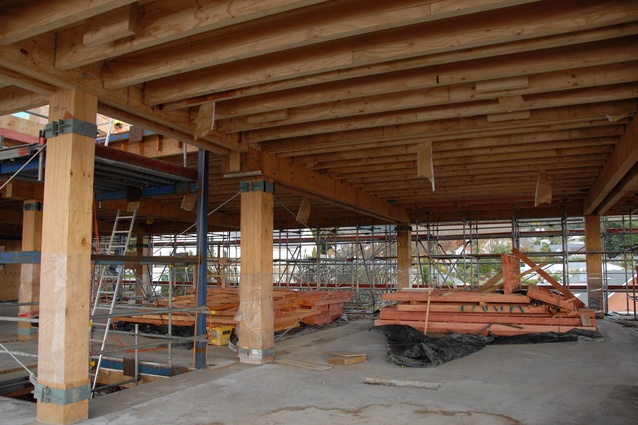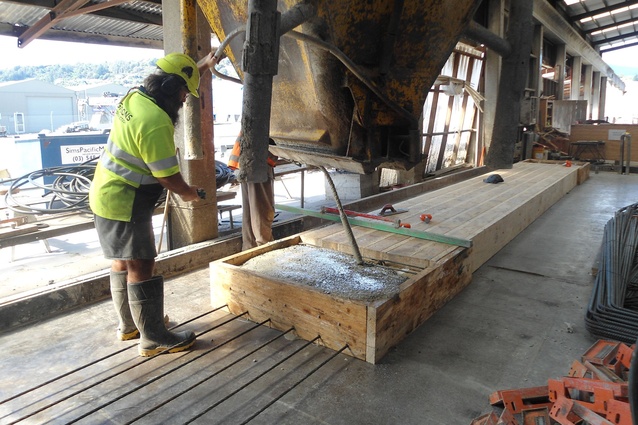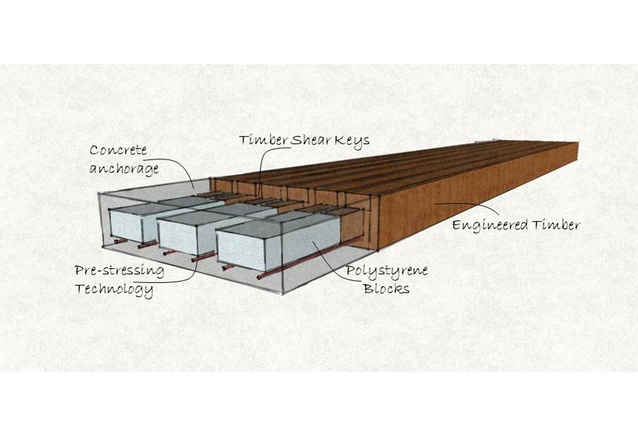Taking the floor
Following the Canterbury earthquakes, design standards for new and existing buildings have been under intense scrutiny, including those related to structural flooring, a key component of a building’s strength.
Due perhaps to the perception that structural concrete components failed in the earthquakes, a noticeable marketplace shift away from concrete flooring systems, and in favour of timber solutions, has occurred.
This divergence from favouring concrete in the structural flooring sector was further polarised earlier this year when the Labour Party announced its ‘pro-wood’ policy, which would mandate all new low-rise government-funded buildings include a timber design option.
Cement and Concrete Association New Zealand (CCANZ) chief executive Rob Gaimster said concrete took more than 90 per cent of the market share for structural flooring, and the reasons for this were numerous, including that concrete was generally a cheaper design option.
PreCast New Zealand executive director Rob Fulford said the impact of the devastation seen in buildings containing concrete in Canterbury did have the potential to damage the market‘s view of concrete as a structural material. “Every building that was damaged naturally had damaged concrete in it. So I think there has been a bit of market pressure to say maybe concrete is the problem,” he said.
Fulford, a member of the Standards Committee for structural concrete design, said it was incorporating recommendations from both the Canterbury Earthquakes Royal Commission and findings from a number of forensic engineers.
The Standards Committee, established by the concrete industry to review the findings from the Royal Commission will incorporate their findings into an amendment to the Concrete Structures Standard NZS3101, which is due out for public comment later this year.
Fulford said one of the failures investigated was the inability of concrete floors to perform as a diaphragm. This ability promotes the transfer of all horizontal forces from wind and earthquake loadings at each level of a building, to the frame and walls that are designed to resist them. He said the most common performance issue with concrete floors was the reinforcing mesh in the topping breaking.
“This was because it was non-ductile and broke when it was stretched under earthquake-imposed deformations. Use of non-ductile mesh was not permitted in the 2006 design code and buildings complying with design rules from that date will not have this problem.”
Testing of the diaphragm function of flooring has shown it can only function effectively if it remains intact and properly connected to its supports.
The Standards Committee is exploring instances where structures were forced to deflect beyond their limit, causing deformations of beams and other structural components, which in turn pushed structures apart, pushing floor supports apart, and thereby reducing seating of the floors.
Fulford said these effects were observed in some of the worst affected buildings, and although loss of seating of floors did not cause any buildings to collapse, the new design standard for concrete structures would include requirements that these effects are to be allowed for in future building design.
But while improvements to concrete design for structural flooring become increasingly sophisticated, some in the industry say the material has been favoured for too long by the commercial construction market, and the move towards wood is a timely shift.
Potius Building Systems director Gavin Robertson said the market had been “blinkered on concrete floors” until recently. Robertson, who develops and produces engineered timber flooring solutions, said there had been an uptake in timber structural flooring in the post-quake market, due to the performance and flexibility of timber structures seen during the major seismic events.
“Wood is certainly more popular now than it ever has been, particularly in the commercial market,” he said. “By installing a wood floor, substantially less weight is put on the building structure, which gives it a better chance of avoiding being compromised in an earthquake.” However, he said that whilst the pro-wood policy would undoubtedly benefit his business, he found it to be unfair - a view seemingly held across the board. CCANZ’s Rob Gaimster said it was wrong for a government to try and control the natural market, and if the policy were put into place it would threaten jobs in the concrete sector.
But despite the public perception around concrete’s lack of structural integrity, and a result perhaps, of the failing of concrete floors in the Canterbury earthquakes, an interesting new flooring technology has recently been developed at the University of Canterbury.
Senior lecturer in structural engineering Dr Alessandro Palermo, along with professor Stefano Pampanin created a hybrid flooring system known as 3PT, which consists of a combination of structural materials; engineered timber, concrete anchorage, and high-strength pre-stressed or post-tensioned reinforcement.
“The pre-stressing induces a pre-camber that balances the self-weight and a portion of the live load. The unique feature of the concrete anchorage allows it to connect the floor to concrete beams and create movement continuity at the mid-supports,” Palermo said.
The innovative system, which is soon to be installed for the first time in a mixed-use, two-storey timber building in Nelson, may be an answer to structural flooring needs in
the rebuild.
Palermo said the use of pre-stressed tendons for timber units would allow longer floor spans than traditional timber flooring systems, and the reduced weight of the system was another key advantage of the technology. “The flooring system has huge potential for Christchurch since practitioners are currently looking for lightweight flooring systems,” he said.

